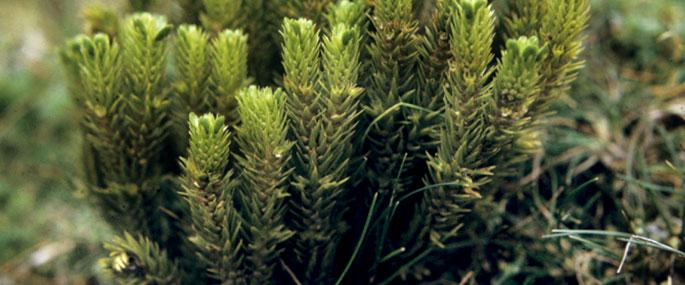2011-05-05 13:01
Scientific Name:
Huperzia selago
Clubmosses are very primitive plants found in rocky habitats, moorland, bogs and mountains. Fir Clubmoss is a tufted, upright fern ally that is particularly common in Scotland, but can be found amongst rocks and on bare ground in upland areas around the UK.
How to identify:
There are seven species of clubmoss in the UK, which are very difficult to tell apart. Fir Clubmoss is a member of the fern allies section of flora and is yellowy-green with upright stems and needle-like leaves, giving it the look of a tiny conifer.
Where to find it:
Widespread in the uplands.
How people can help:
The Wildlife Trusts manage many heathland and upland habitats sympathetically for the benefit of all kinds of wildlife. We are also working closely with farmers, landowners and developers to promote wildlife-friendly practices. We have a vision of a 'Living Landscape': a network of habitats and wildlife corridors across town and country, which are good for both wildlife and people. You can support this greener vision for the future by joining your local Wildlife Trust.
Statistics:
Height: up to 10cm
Conservation status:
The Fir Clubmoss is scarce and the related Marsh Clubmoss is classified as a Priority Species in the UK Biodiversity Action Plan.
Did you know?:
Clubmosses are members of an ancient group of plants that included the tree-like Lepidodendrons that dominated the world in the Carboniferous period, some 320 million years ago. These trees and mosses died and fossilised to become the coal we use for fuel today.
Seasons:
Spring
Summer
Autumn
Winter
Image:
